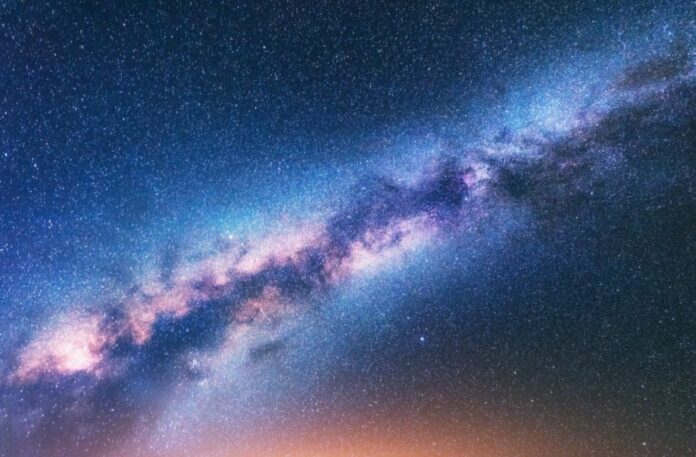Every observation in the future “must” take these new findings into account, say astronomers
University of Florida astronomer Adam Ginsburg has made significant strides in understanding a mysterious dark region in the Milky Way known as “The Brick,” thanks to the James Webb Space Telescope (JWST).
This dense gas cloud has been a subject of scientific curiosity due to its surprisingly low star formation rate, despite being rich in dense gas.
Ginsburg, along with UF graduate students Desmond Jeff, Savannah Gramze, and Alyssa Bulatek, used the JWST to uncover new details about The Brick.
Published in The Astrophysical Journal, their research reveals an unexpectedly high amount of frozen carbon monoxide (CO) ice in this region, challenging previous notions about star formation.
The presence of CO ice, typically indicative of conditions favorable for star creation, presents a paradox in The Brick. The area shows lower star formation than expected, despite the abundance of CO ice.
“Our observations compellingly demonstrate that ice is very prevalent there, to the point that every observation in the future must take it into account,” Ginsburg said.
This finding suggests that the internal temperature of the gas in The Brick is higher than in similar clouds, which could affect star formation.
This research not only provides new insights into the abundance of CO in the Milky Way’s center but also indicates that the ratio of gas to dust there is lower than previously believed.
It marks a shift in understanding how molecules are present and transported in space, moving beyond the traditional focus on gaseous CO.
By analyzing the distribution of CO ice, which required intense backlighting from stars and hot gas, the team extended their observations to over ten thousand stars.
This approach provides a more detailed picture of interstellar ice, contributing to our understanding of the origins of molecules in our Solar System.
Ginsburg’s team plans further JWST observations to explore different types of celestial ices and their relative amounts.
“We don’t know, for example, the relative amounts of CO, water, CO2, and complex molecules,” commented Ginsburg. “With spectroscopy, we can measure those and get some sense of how chemistry progresses over time in these clouds.”
Source: 10.3847/1538-4357/acfc34
Image Credit: iStock
